 Royal Navy Broadside Ironclads: HMS Warrior, HMS Black Prince 1859–1862, service until 1902
Royal Navy Broadside Ironclads: HMS Warrior, HMS Black Prince 1859–1862, service until 1902
HMS Defence and Resistance signed a return to more budgetary wise ships, as the admiralty lordships was not convinced the high price tag of the Warrior class was able to parry a mass-production on the French side. These ships were 1/3 lighter. These vessels were provided under the 1859 Programme, and were classified as frigates, being smaller editions of Warrior, but inferior in almost all respects except manoeuvrability.
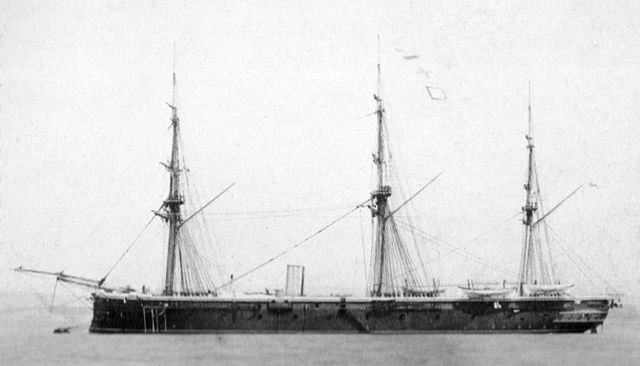
The belt armour was 140ft long, and arranged as in Warrior, with the ends of the ship and the steering gear being unprotected. They had a frigate stern, as in Warrior, but a ram bow was adopted in place of the clipper bow. Both ships exceeded the designed speed of 10.75kts. Armament as designed was 18-68pdr SB and 4-40pdr BL, but Defence was completed with 8-7in BL, 10-68pdr SB and 4-5in BL, and Resistance with 6-7in BL, 10-68pdr SB and 2-32pdr SB. Defence was rearmed 1866/68 and Resistance 1867/69. As completed, 10-68pdr and four 7in guns were behind armour, and as rearmed eight 7in and the two 8in guns were behind armour, the endmost ports of the battery being left vacant.
These were barque-rigged vessels with a sail area of 24,500 sq ft; Defence was modified to ship rig in 1864 and then reverted to barque during the 1866/68 refit. They could make 10.5kts under sail and handled well, except in a beam sea. Both were fitted with lifting screws. The sea-going service of Defence ended in 1885; she was renamed Indus (TS) in 1898, and hulked in 1922. The sea-going service of Resistance ended in 1880. She was used as a target for gunnery and torpedo experiments in 1885.
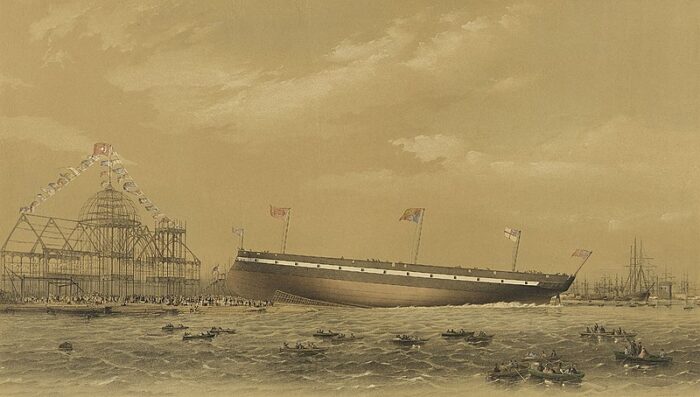
Launch of HMS Resistance
Development
In 1859 the Admiralty saw the cost of the Warrior class ironclads, £377,000 as twice a wooden steam-powered ships of the line, still the norm at the time. However since her armour was immune to all ordnance afloat and high speed was not necessary, a compromised design, far cheaper, could be done. The Lordships requested a smaller, slower, cheaper design with the same armour. Rear Admiral Sir Baldwin Wake Walker was Controller of the Navy at the time, and he proposed six ships to be planned of this design. Her was however over-ruled by caution, with two ordered on 14 December 1859.
It was apparent from the start their speed meant they could not operate with the Warriors in a tactical squadron. Some also signalled they would be inferior to the French ironclads under construction at the time. Naval architect Sir Nathaniel Barnaby considered them “worth one quarter of a Warrior” for 2/3 of their cost, which was not flattering. To keep cost low from the start like the French Gloire they were designed as armoured frigates and armed with a mix of rifled breech-loading and muzzle-loading smoothbore guns but this was modified after a few years.
Design of the class
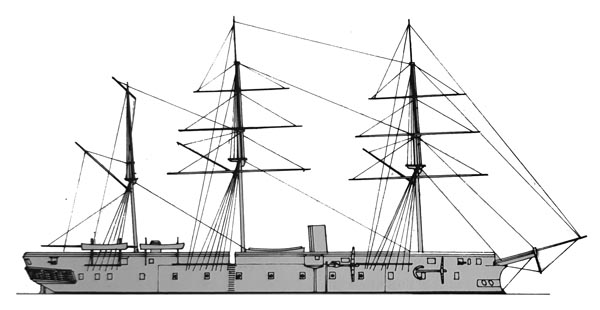
Conway’s rendition of HMS Defence as built.
Hull and general design
The Defence class ironclads measured 280 feet (85.3 m) long between perpendiculars, 291 feet 4 inches (88.8 m) overall (versus 128 m/420 ft on the Warriors), so far less than the Warriors, albeit they had a ram, not a clipper like prow as major difference. The beam was still of 54 feet 2 inches (16.5 m) for a draught of 26 feet 2 inches (8 m) for a reasonable hull ratio. They displaced 6,070 long tons (6,170 t), far less than the Warriors (9,137 long tons) with a fully loaded tonnage of 3,710 tons. The ram was an innovation, and unlike the French Gloire, it was well shaped, as a plough. The hull ends were subdivided by watertight transverse bulkheads with partial double bottom. Each ships of the class had a crew of 460 officers and ratings, versus 707 on the Warriors, which made them cheaper to operate as well. In all, they were 128 feet 8 inches (39.2 m) shorter, 3,000 long tons (3,000 t) lighter, but criticisms were directed at their armament, juged inferior, as their speed.
Protection

The Defence-class were designed to keep the same armour as the Warriors, and were protected by a central belt of wrought iron armour 4.5 inches (114 mm) thick, but covering “only” 140 feet (42.7 m) amidships, over the battery. It extended from upper deck level, and down to six feet (1.8 m) below the waterline, so pretty extensive.
There were transverse bulkheads, also 4.5 inches thick to protected the guns from raking fire, creating an early citadel.
The belt armour was backed by 18 inches (460 mm) of teak since they were wooden-built vessels.
The hull’s ends were left entirely unprotected, including over the steering gear. It was very vulnerable. However to lanage hits fore and aft below the waterline, the hull was sub-divided into many watertight compartments, in order to minimize flooding.
The ten 68pdr and four 110pdr guns were protected by belt armour, and after rearming soon after completion, the two 203mm and eight 178mm guns were also behind armour. All in all, this was the best aspect of the ships.
Powerplant
The Defence-class had a single, two-cylinder trunk steam engine. It was engineered and manufactured by famous steam specialist John Penn and Sons. It drove as customary of the time a single shaft and 21-foot (6.4 m) two-bladed bronze propeller. The steam engine was fed by four rectangular boilers, at a working pressure of 20 psi (138 kPa; 1 kgf/cm2). Total output varied among ships and sources, between 2,329 and 2,343 indicated horsepower (1,737–1,747 kW) as noted in their sea trials. Maximum speed was thus between 11.23 and 11.4 knots (20.80–21.11 km/h; 12.92–13.12 mph), which was significantly less than the 14 knots (26 km/h; 16 mph) of the Warriors. They also carried 450 long tons (460 t) of coal in order to cross 1,670 nautical miles (3,090 km; 1,920 mi) at 10 knots (19 km/h; 12 mph).
They were also barque-rigged on three masts, four stages each, with a total sail area of 24,500 square feet (2,276 m2) with was a slightly better ratio compared to the elongated Warriors. However the latter still had 48,400 square feet (4,497 m2), which was twice their surface. The lower masts and bowsprit were forged in iron in order to withstand ramming. Under sail they were tested at 10.5 knots (19.4 km/h; 12.1 mph) which was almost as good as when steaming. No doubt that in high winds in full sail and full steam they could be a bit faster, around 12+ knots. However to reduce wind resistance while under sail their single funnel was semi-retractable, just like on the Warriors. The propeller also to avoid drag, could be hoisted up, lodged into the stern, also while under sail, also like the Warriors. This combined features will be standard on British Ironclads for quite a time.
Armament
The Defence-class were designed to carry 18 smoothbore and muzzle-loading 68-pounder guns on either side, main deck plus one each fore and aft as chase guns, upper deck. This was to be completed with four Armstrong 40-pounder guns, the first rifled breech loader entering service, but they worked only as saluting guns.
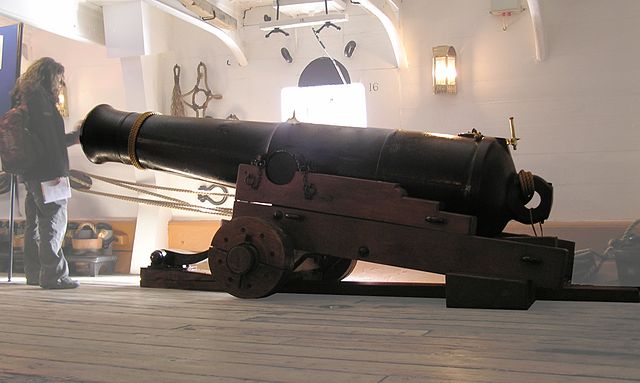
68 Pdr smooth-bore guns
The 8.12-inch (206 mm) 68-pounder weighed 10,640 pounds (4,826 kg) for a range of 3,200 yards (2,900 m), when firing a solid shot, useful against traditional wooden ships, but unable to do anything against an oposite ironclad. It was theorized in that case to fire on the masts and fore and aft, albeit the Gloire and sisters unlike the british vessels, had a full lenght armour.
During construction however these were discarded as already obsolete. They instead gained six (Defence) or eight (Resistance) Armstrong rifled 7 inches breech-loading 110-pounder guns, still completed by ten 68-pounders in the main battery. On the upper deck were installed two 32-pounder smoothbores on Resistance and four breech-loading 5-inch (127 mm) guns on Defence.
These smoothbore muzzle-loading guns were mounted on the main deck. These older models from 1846 saw action already in the Crimean war, but produced at a time when new rifled and breech loading guns were introduced. They were kept and cohabited with the latter due to their reliability and power, retained until eventually juged obsolete. The surplus stocks of 68-pounders were also converted with rifled barrels, remaining in service until… 1921. Designed originally by William Dundas and prduced at Low Moor Ironworks, as cast iron smoothbore models designed to perforate the thickest walls of the time. It was also cheap to produce with over 2,000 made seeing action well after 1872 when converted by Palliser.
Specs:
Mass: 88, 95 or 112 cwt
Barrels: 88 cwt 9 feet 6 inches (2,896 mm), 95 cwt 10 feet (3,048 mm), 112 cwt 10 feet 10 inches (3,302 mm)
Crew: 9–18
Shell: Solid Shot or Explosive, 68 pounds (30.84 kg) 8.12 inches (20.62 cm) caliber.
Muzzle velocity: 1,579 feet per second (481 m/s)
Elevation 15 degrees, range 3,000 yards (2,700 m) up to 3,620 yards (3,310 m)
110-pounder guns
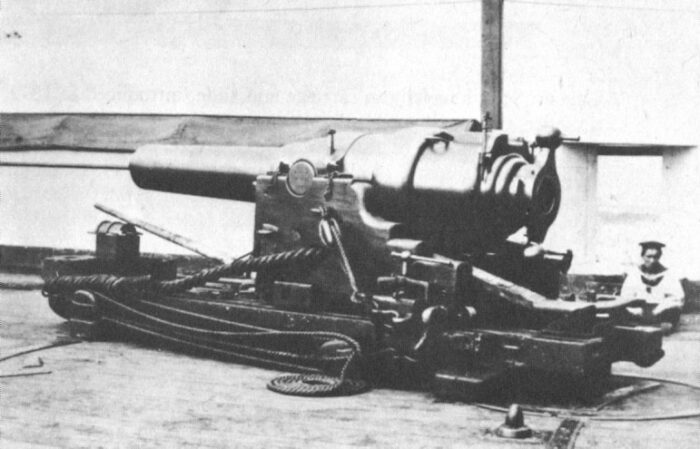
These were massive breech-loading guns, 72 cwt (8,064 lb), new designs from Armstrong, derived from the 12 pdr 8 cwt field gun, for which many hopes were placed. The core idea was to outrange any ship of the line, which were far better armed with up to 60 guns per broadside. The range was 4,000 yards (3,700 m). So these 110 pounders had no equivalent in the world at the time. They innovated as rifled built-up gun with breechloading, but trials showed pressure required was too much for such breechloading system. In combat there had been incidents of breech explosion. So Armstrong “screw” breech mechanism was brought forward, using a heavy block inserted in a vertical slot in the barrel, behind the chamber, leaving a large hollow screw behind it.

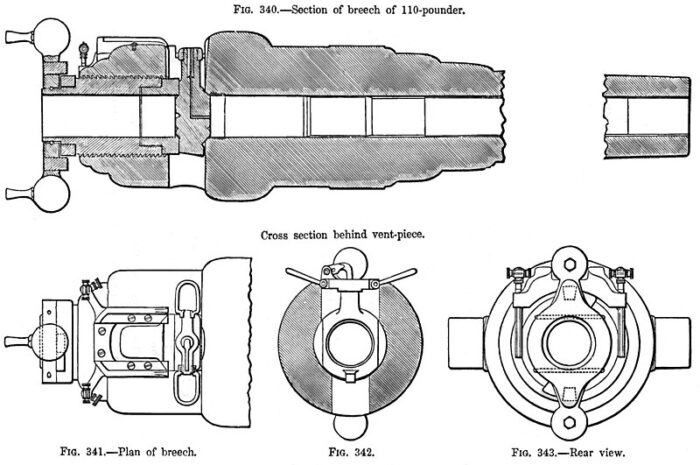
Produced until 1864 there was also a heavier 82 cwt (9,184 lb) version incorporating a strengthening coil over the powder chamber from 1861. They saw action at the Boshin war in Japan, in the Bombardment of Kagoshima and of Shimonoseki in 1863 and 1864 and New Zealand Wars in 1864. Firing tests of September 1861 against armour proved them inferior however to the 68-pounder smoothbore in penetration. In the end they had short life in the British inventory.
Trials indeed halted plans to fully equip the ironclads with this gun, showed to be more labour-intensive to load and fire and to avoid risks, were used with reduced propellant charge making them almost useless in practice.
Specs:
Barrel: 99.5 inches (2.527 m) bore x 7-inch (177.8 mm) for 14.21 calibres
Shell: 90-109 pounds (40 to 50 kg)
Breech: Armstrong screw with vertical sliding vent-piece block
Muzzle velocity: 1,100 feet per second (340 m/s)
Maximum Range: 3,500 yards (3,200 m).
40-pounder guns
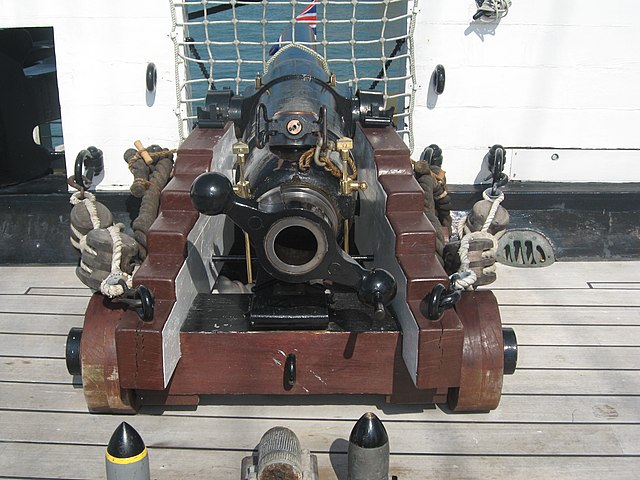
Used as saluting guns, they were rifled still, designed recentkly in 1859 by Armstrong and also produced by the Royal Gun Factory. These were land/sea universal guns, placed on horse-drown carriages for land operations, this was no the case on Warrior, which had them in low wheeled deck carriages (photos). Production ceased in 1863.

Specs:
Mass: 32 cwt (3,584 pounds (1,626 kg)), 35 cwt (3,920 pounds (1,780 kg)).
Barrel: 106.3 inches (2.700 m) x 4.75-inch (120.6 mm)
Shell: 40 pounds 2 ounces (18.20 kg), mv 1,180 feet per second (360 m/s)
Armstrong screw breach with vertical sliding vent-piece block.
Modifications
In 1866-1868, Resistance and Defence were completely rearmed with two 8-in(202 mm)/15 MLR Mk III, fourteen 7-in(178mm)/16 MLR Mk III.
They proved were heavier, so the load was reduced, less were carried. The 8-inch guns were mounted amidships, main deck, broadside, with the outer ports showing the remaining eight 7-in guns. There was in addition a pair of 7-inch guns were mounted on the upper deck as fore and aft chase guns, unprotected on Resistance. However Defence had them mounted on the main deck, forward of the armour, also unprotected as outside the battery armour.
The 9 long tons (9.1 t) eight-inch (203 mm) fired 175 pounds (79.4 kg) explosive shells at a muzzle velocity of 1,410 ft/s (430 m/s), in trials they proved capable to penetrate 9.6 inches (244 mm) of wrought iron armour.
The 6.5-long-ton (6.6 t) 7-inch guns fired a 112 pounds (50.8 kg) shell, which still could penetrate 7.7-inch (196 mm) of armour. In store for them were both cheap solid shot and explosive shells.
Warrior class specifications) |
|
| Displacement | 6,070–6,150 long tons (6,170–6,250 t) |
| Dimensions | 302 ft (92.0 m)oa/280 ft pp x 54 ft 2 in x 26 ft (85 x 16.5 x 7.9 m) |
| Propulsion | 1 shaft trunk steam engine, 4 boilers: 2,540 ihp (1,890 kW) +barque rig |
| Speed | 11 knots (20 km/h; 13 mph) |
| Range | 1,670 nmi (3,090 km; 1,920 mi) at 10 knots (19 km/h; 12 mph) |
| Armament | 6–8 × 7 in (178 mm) RBL, 10 × 68-pdr SML, 2 × 32-pdr SB/4× 5 in RBLs |
| Protection | Belt: 4.5 in (114 mm), Bulkheads: 4.5 in (114 mm) |
| Crew | 460 |
Career of the Defence class ironclad
 HMS Defence (1861)
HMS Defence (1861)
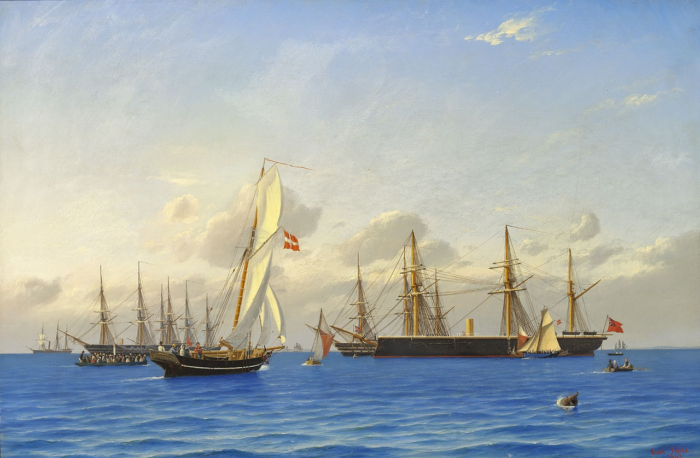
HMS Defence was laid down initially at Palmers, Jarrow on 14 December 1859, she was launched on 24 April 1861 and completed on 4 December 1861 at a cost of £252,422 versus £377,292 for a Warrior class.
Just after she was launched on 24 April 1861, she ran aground, and was refloated the next day. In speed trials on 22 February 1862, she collided with HMS Fenella, off Spithead with her anchor pushed through the wooden ship’s bow, below the waterline. She ran aground, was refloated and sent to Portsmouth Dockyard for repairs, a bad omen. HMS Defence was eventually commissioned after many delays on 4 December 1861 but fully completed on 12 February 1862.
She was, like the Warriors, assigned to the Channel Fleet until 1866 (France was still the major adversary). She was paid off in Plymouth, to be refitted and re-armed as shown above, with less guns, but all with armour-piercing capabilities. She was back to to the Channel Fleet in 1868. In 1869 she was posted to the North America station, relieving HMS Royal Alfred. Next she was reposted to the Mediterranean Fleet, from 1871 to 1872, under command of Captain Nowell Salmon (VC), distinguished in the great Indian Mutiny of 1857.
As she tried to recover items lost by the ironclad HMS Lord Clyde grounded off Pantelleria, she damaged her propeller and rudder and a wave tossed her further so she was grounded as well, narrowly avoiding more damage on 24 March 1872. Cost was £417 after she was refloated and repaired. She was paid off and experienced a lengthy refit in Plymouth (1872-1874), becoming guard ship on the Shannon, until 1876. She was recalled to the Channel Fleet until 1879, then transferred to the Mediterranean to patrold the Dardanelles as the Russo-Turkish War of 1878 went on. Defence replaced HMS Resistance as guard ship in the Mersey and stayed at that post until 1885. Being completelky obsolete by that point, she was retired from sea-going service. In between on 20 July 1884 she collided with HMS Valiant in Lough Swilly. Her bow was repaired. In 1890, she became an anchored floating workshop at Devonport, “HMS Indus” from 1898 to free the name for a new pr-dreadnought. She was sold for scrap at Devonport, August 1935, so a fairly long post-career life.
 HMS Rsistance (1861)
HMS Rsistance (1861)
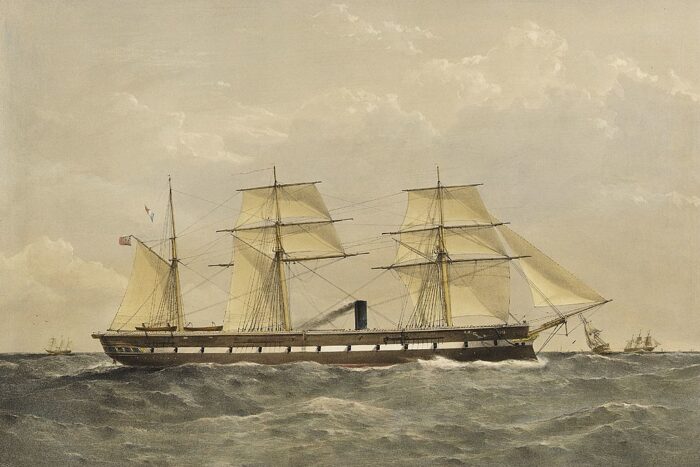
HMS Resistance was ordered on 14 December 1859, laid down at Westwood, Baillie in Cubitt Town, London on 21 December 1859. She was launched on 11 April 1861 and completed on 2 July 1862 at a higher cost compared to her sister, of £258,120.
Like her sister she was in the Channel Fleet until 1864 and transferred to the Mediterranean Fleet. She was however the very first British ironclad assigned to that fleet, facing Toulon’s French ironclads. Soon, Italy and Austria-Hungary themselves launched an ironclad race. In 1867, she was back home to be paid off in Portsmouth for refit/re-armament, diverging from her sister. Fully recommissioned later, in 1869, she became a guardship in the River Mersey until 1873. She was back afterwards to the Channel Fleet and resumed her previous role in 1877 until paid off in 1880 at Devonport.
In 1885 Resistance she became a target ship to test her armour against torpedoes and gunfire. On 3 February 1888, pierced and flloded by a Whitehead torpedo she sank in Portchester Creek.

She was reloated and kept in storage until eventually sold for scrap following on 11 November 1898, to J S Turnbull, Glasgow. On 4 February 1899 she was towed from Spithead by the Liverpool tugs Pathfinder and Wrestler, down to the Mersey but a a gale in the Irish Sea, on 8 February had hre crew working out her steam engine, but boilers issues had her loosing steam. She was also flooded in the forward compartments and stokehold. Unable to steer and leaking abundantly, the tugs tried to bring her at anchor inside Holyhead Breakwater, outer harbour. But the next morning an inspection showed the flooding only augmented, and she was dangerously close to the limit of buoyancy if flooded to 42 feet (13 m). This she was towed further into the harbour, put ashore in Penrhos Bay, salvaged, refloated on 17 February and the Tugs completed her trip to the Mersey completed in 13 March when beached at Oglet Point (Garston) to be broken up at the ironfounders Monks, Hall & Co in Warrington.
Read More/Src
Books
Ballard, G. A., Admiral (1980). The Black Battlefleet. Annapolis, Maryland: Naval Institute Press. ISBN 0-87021-924-3.
Brown, David K. (1997). Warrior to Dreadnought: Warship Development 1860–1905. London: Chatham Publishing. ISBN 1-86176-022-1.
Dodson, Aidan (2015), “The Incredible Hulks: The Fisgard Training Establishment and Its Ships”, Warship 2015, London: Conway, pp. 29–43, ISBN 978-1-84486-276-4
Jones, Colin (1996). “Entente Cordiale, 1865”. In McLean, David & Preston, Antony (eds.). Warship 1996. London: Conway Maritime Press. ISBN 0-85177-685-X.
Lambert, Andrew (2010). HMS Warrior 1860: Victoria’s Ironclad Deterrent (2nd revised and expanded ed.). Annapolis, Maryland: Naval Institute Press. ISBN 978-1-59114-382-6.
Parkes, Oscar (1990) [1957]. British Battleships. Annapolis, Maryland: Naval Institute Press. ISBN 1-55750-075-4.
Silverstone, Paul H. (1984). Directory of the World’s Capital Ships. New York: Hippocrene Books. ISBN 0-88254-979-0.
Winfield, R.; Lyon, D. (2004). The Sail and Steam Navy List: All the Ships of the Royal Navy 1815–1889. London: Chatham Publishing. ISBN 978-1-86176-032-6. OCLC 52620555.
Links
on navypedia.org/
on en.wikipedia.org/
on battleships-cruisers.co.uk
commons.wikimedia.org/

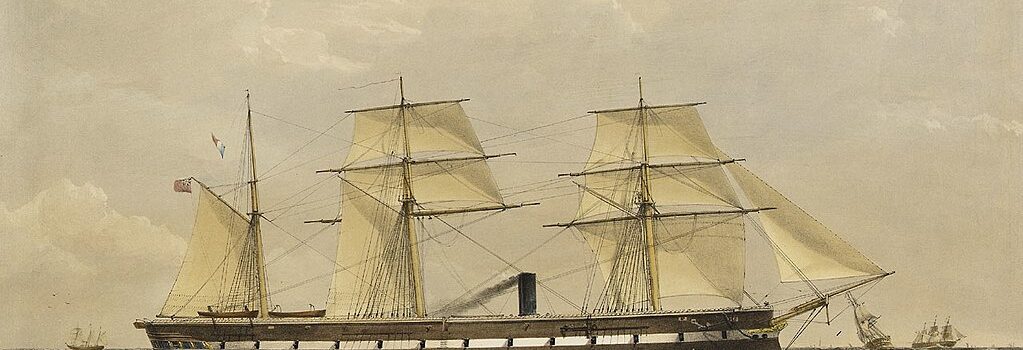
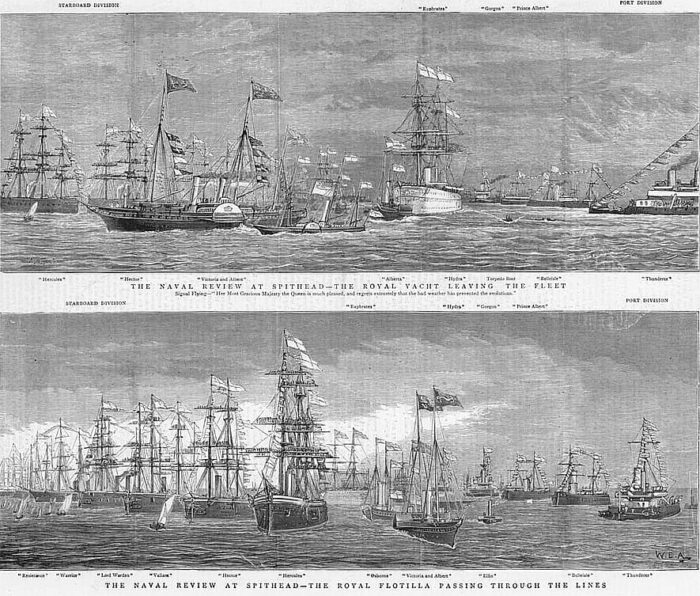
 Latest Facebook Entry -
Latest Facebook Entry -  X(Tweeter) Naval Encyclopedia's deck archive
X(Tweeter) Naval Encyclopedia's deck archive Instagram (@navalencyc)
Instagram (@navalencyc)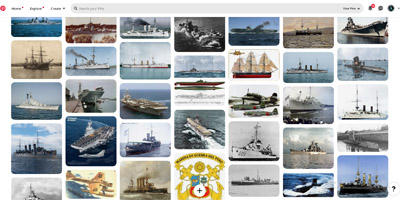


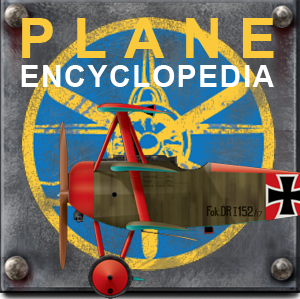
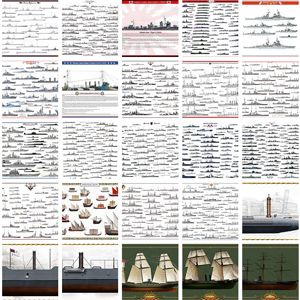
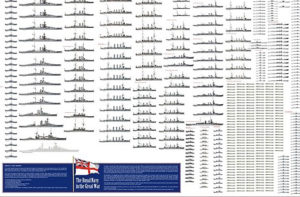
 French Navy
French Navy Royal Navy
Royal Navy Russian Navy
Russian Navy Armada Espanola
Armada Espanola Austrian Navy
Austrian Navy K.u.K. Kriegsmarine
K.u.K. Kriegsmarine Dansk Marine
Dansk Marine Nautiko Hellenon
Nautiko Hellenon Koninklije Marine 1870
Koninklije Marine 1870 Marinha do Brasil
Marinha do Brasil Osmanlı Donanması
Osmanlı Donanması Marina Do Peru
Marina Do Peru Marinha do Portugal
Marinha do Portugal Regia Marina 1870
Regia Marina 1870 Nihhon Kaigun 1870
Nihhon Kaigun 1870 Preußische Marine 1870
Preußische Marine 1870 Russkiy Flot 1870
Russkiy Flot 1870 Svenska marinen
Svenska marinen Søværnet
Søværnet Union Navy
Union Navy Confederate Navy
Confederate Navy Armada de Argentina
Armada de Argentina Imperial Chinese Navy
Imperial Chinese Navy Marinha do Portugal
Marinha do Portugal Mexico
Mexico Kaiserliche Marine
Kaiserliche Marine 1898 US Navy
1898 US Navy Sovietskiy Flot
Sovietskiy Flot Royal Canadian Navy
Royal Canadian Navy Royal Australian Navy
Royal Australian Navy RNZN Fleet
RNZN Fleet Chinese Navy 1937
Chinese Navy 1937 Kriegsmarine
Kriegsmarine Chilean Navy
Chilean Navy Danish Navy
Danish Navy Finnish Navy
Finnish Navy Hellenic Navy
Hellenic Navy Polish Navy
Polish Navy Romanian Navy
Romanian Navy Turkish Navy
Turkish Navy Royal Yugoslav Navy
Royal Yugoslav Navy Royal Thai Navy
Royal Thai Navy Minor Navies
Minor Navies Albania
Albania Austria
Austria Belgium
Belgium Columbia
Columbia Costa Rica
Costa Rica Cuba
Cuba Czechoslovakia
Czechoslovakia Dominican Republic
Dominican Republic Haiti
Haiti Hungary
Hungary Honduras
Honduras Estonia
Estonia Iceland
Iceland Eire
Eire Equador
Equador Iran
Iran Iraq
Iraq Latvia
Latvia Liberia
Liberia Lithuania
Lithuania Mandchukuo
Mandchukuo Morocco
Morocco Nicaragua
Nicaragua Persia
Persia San Salvador
San Salvador Sarawak
Sarawak Uruguay
Uruguay Venezuela
Venezuela Zanzibar
Zanzibar Warsaw Pact Navies
Warsaw Pact Navies Bulgaria
Bulgaria Hungary
Hungary

 Bundesmarine
Bundesmarine Dutch Navy
Dutch Navy Hellenic Navy
Hellenic Navy Marina Militare
Marina Militare Yugoslav Navy
Yugoslav Navy Chinese Navy
Chinese Navy Indian Navy
Indian Navy Indonesian Navy
Indonesian Navy JMSDF
JMSDF North Korean Navy
North Korean Navy Pakistani Navy
Pakistani Navy Philippines Navy
Philippines Navy ROKN
ROKN Rep. of Singapore Navy
Rep. of Singapore Navy Taiwanese Navy
Taiwanese Navy IDF Navy
IDF Navy Saudi Navy
Saudi Navy Royal New Zealand Navy
Royal New Zealand Navy Egyptian Navy
Egyptian Navy South African Navy
South African Navy






























 Ukrainian Navy
Ukrainian Navy dbodesign
dbodesign